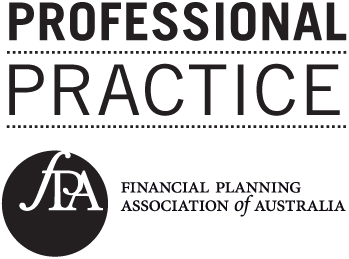Superannuation & Self Managed Funds
Superannuation is an extremely attractive investment vehicle because of its generous tax concessions, however the complicated rules mean investors need expert advice to maximise the opportunities and avoid the pitfalls.
For superannuation outside your employer super fund, we generally recommend either a self-managed super fund (SMSF) or a superannuation wrap account.
SMSFs
An SMSF is not for everyone, but it’s certainly an alternative you should consider if you have at least $250,000 in super.
An SMSF differs from managed superannuation funds offered by fund managers in so far as you are a trustee (or a director of the trustee company) of your own fund with its own legal structure, bank account and tax file number. This puts you in the driver’s seat in terms of managing the individual investments in your super portfolio.
Effectively, an SMSF is a small super fund of four or fewer members which is regulated by the Australian Taxation Office.
SMSFs have a number of distinct advantages over managed super funds offered by fund managers. These are:
Potential Cost Savings
Assuming you have at least $250,000 in superannuation, there can be significant cost savings with a self-managed fund. The once-off cost of setting up a new self-managed fund is approximately $600 with an additional $800 for a company if a corporate trustee is required.
Current ongoing administration costs (including preparation of financial statements, tax return, audit, SMSF supervisory levy and actuarial certificate if needed) generally range from $2,500 to $3,500 p.a., depending on the number of the number and type of investments and whether or not the fund is paying a pension.
Typically, management expense ratios for retail managed funds are approximately 2% p.a. For investors with at least $250,000 in superannuation who wish to invest directly into shares, property and fixed interest markets, a self-managed fund can provide considerable cost savings through lower annual management costs.
However, for reasons of convenience, diversification and potential outperformance, the optimum SMSF portfolio for your particular situation may well include a large exposure to managed funds, which would tend to dissipate or eliminate any cost savings. Of course, what matters is the net return after fees, so minimising costs is not the be all and end all.
Maximum Investment Choice
Investors, guided by their adviser, can choose their own asset allocation and select their own investments. This allows a portfolio to be constructed in an optimum way to satisfy your specific needs, objectives and risk profile.
The fact is that there is a much wider choice of investment options available through a SMSF. For example, your fund could invest in direct private equity or venture capital investments or direct property.
If you are a business owner and your business owns its premises, your superannuation fund can acquire these premises at market value as long as the fund charges your business a commercial rent. In cases where a business owner is keen to access working capital, this can be advantageous.
Greater Control
Control over the portfolio effectively rests with you, the investor, thus allowing you to make adjustments appropriate to changing personal, economic or market conditions more easily and quickly.
If advantageous, you can elect to have the fund buy listed securities or units in a managed fund from you or a related party or you can make in specie contributions of these assets. You may choose to do this, for example, in order to crystallise a capital loss while continuing to own the assets through another entity which is tax-sheltered. You also can receive in specie benefit payments from the fund (as long as it is in accumulation mode) or purchase any fund asset at current market value.
However, it should be noted that there are restrictions on what a super fund can invest in and there are serious penalties for non-compliance, including heavy fines, a tax penalty of 45% of the fund’s assets or even possible imprisonment.
So the investor does not have total freedom on how to invest his or her super within a SMSF. Some of these restrictions are:
- A super fund can only borrow in specific limited circumstances
- A super fund cannot lend money to a member or related party
- A super fund can only run a business within strict parameters
- A super fund cannot acquire assets from a member or related party, except (in the case of a SMSF) in-house assets that comprise less than 5% of the fund’s total value, listed securities, units in a managed fund, or business real property
- A super fund cannot invest in personal use assets that would breach the sole purpose test, e.g. a holiday home that is used by members or related parties, or artwork that is hung on the wall of your home or office
As you can see, it is essential for trustees of a SMSF to obtain professional advice to make sure they do not breach any of these rules.
A recommended resource for SMSF trustees is the Tax Office publication Running a self-managed super fund. This can be found at https://www.ato.gov.au/uploadedFiles/Content/SPR/downloads/spr17621_smsf.pdf
Maximum flexibility in estate planning
A SMSF is the most flexible and tax-effective super vehicle for providing lump sums or income streams to a spouse, children or other dependants on the death of a super fund member – with no risk of your wishes being overruled, as long as the trust deed is followed and the documentation of binding death nominations and/or reversionary pensions are in order.
Whereas a Will can be overturned by a court order after death, death benefit instructions to super fund trustees cannot be challenged if the rules regarding binding death benefit nominations and reversionary pensions are followed. A Will cannot direct the trustee of a super fund as to whom to make superannuation benefit payments. There is a forum for a challenge to super benefit payments by aggrieved potential beneficiaries and that is the Superannuation Complaints Tribunal – except in the case of SMSFs where it has no jurisdiction. If the documentation was deficient, any legal challenge to the distribution of death benefits from a SMSF would have to go through the Supreme Court.
SUPER WRAP ACCOUNTS
However, the introduction of super wrap accounts in recent years has provided a viable cost-effective investment alternative to SMSFs. Previously, super master trusts with their limited investment choices and costly fee structures were no match for SMSFs.
But now investors can enjoy many of the advantages of SMSFs through super wrap accounts, without the responsibility of being trustees of a fund.
For example, the super wrap platform we use allows us to choose a portfolio for you from about 520 wholesale managed funds offered by 140 fund managers, as well as about 750 ASX listed securities. You also can participate in share floats and placements.
While this is not as extensive an investment choice as SMSFs offer, it is more than sufficient to meet the needs of most investors.
The cost structure of super wrap accounts is competitive with SMSFs unless the investor wants to invest predominantly in direct investments rather than in managed funds.
With greater control in a SMSF comes greater responsibility for the investor as a trustee to ensure that all the paperwork prepared by the fund administrator is correct and lodged in a timely fashion with the ATO.
This consists of tax returns, audited financial statements, minutes of trustee meetings, etc. Many investors, particularly retirees as they move into their 70s and 80s, prefer the convenience and simplicity of leaving these administrative responsibilities to the trustees of a super wrap fund.
Regarding estate planning, the super wrap account we use offers non-lapsing binding death benefit nominations (which can be amended or revoked by the member but are binding on the trustee), reversionary pension nominations and child allocated pensions. While SMSFs offer maximum flexibility in estate planning, this comes close and would satisfy the requirements of most investors.
We recommend investing through a super wrap account rather than a SMSF for:
- those investors with superannuation balances of less than $250,000;
- those investors who value convenience and simplicity and do not want the responsibility of being trustees; and
- those investors who would be best served by a portfolio of selected quality managed funds rather than direct investments.


